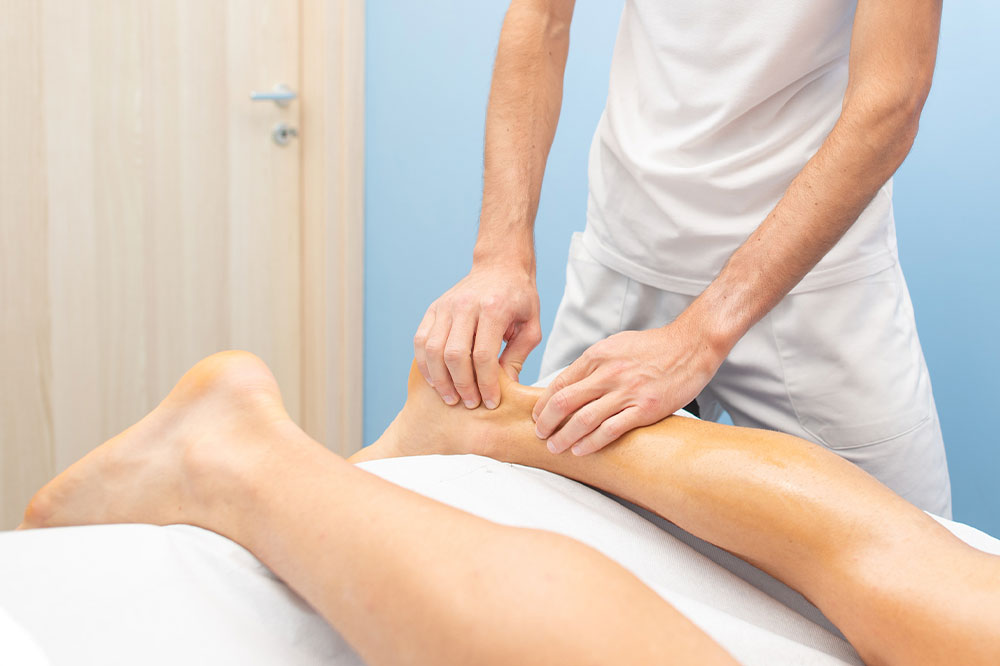
Tendonitis – Symptoms, causes, and management
Tendons are the thick, fibrous cords that connect the muscle to the bone. The condition where these tendons become inflamed is known as tendonitis. It can affect any body part but most commonly occurs in the shoulders, elbows, wrists, knees, and heels. Most cases of tendonitis improve with self-care. However, medical intervention may be necessary if symptoms do not improve. When left untreated, it can cause a tendon to tear, needing surgery.
What are the signs and symptoms of tendonitis?
Symptoms for tendonitis may vary from person to person. The most common signs and symptoms of this condition include:
Gradual or sudden pain in the affected tendon
Tenderness and pain when moving the joint
A grating feeling when moving the joint
Swelling
What causes tendonitis?
Most cases of tendonitis result from a sudden, serious injury or repetitive minor impact to a tendon. It may also result from poor posture, wearing unsupportive shoes, or exercising too much.
Some factors that may increase the risk of tendonitis include:
Job
Those with physically demanding jobs such as gardening, landscaping, woodworking, shoveling, painting, scrubbing, and certain sports that involve throwing and pitching are at a higher risk of developing tendonitis.
Medical history
Certain medical conditions can weaken the muscles, increasing the risk of tendonitis. These include rheumatoid arthritis, diabetes, gout, and blood or kidney diseases.
Age
Those over the age of 40 also have a higher risk of developing tendonitis, as tendons reduce their ability to tolerate stress, become less elastic, and tear more easily.
How is tendonitis diagnosed?
Generally, the diagnosis of tendonitis involves a physical examination by the doctor. They may gently move the affected area to check for a creaking sound. Based on their diagnosis, a treatment plan will be drawn up.
If symptoms do not improve, they may recommend additional tests such as an X-ray to check for calcium deposits around the tendon or an ultrasound or MRI scan to check for swelling in the tendon sheath.
What are the treatment options for tendonitis?
Tendonitis treatment is centered around alleviating pain and other symptoms. It may include:
Rest
Since tendonitis occurs due to overuse of a certain body part, doctors may recommend taking a few rest days to reduce inflammation. A bandage, splint, or brace may be recommended to reduce movement of the affected area.
Hot and cold therapy
For injuries that have occurred within the last 48 hours, icing the affected area may be recommended, as it can help reduce inflammation and pain. Some people may also find it helpful to alternate between heat and ice to ease the pain.
Pain relievers
The doctor may also prescribe certain other treatments to reduce pain. These may be advised in combination with the following:
Physical therapy
This can help relieve pain by using a combination of medical manipulation and massaging techniques in the physical therapist’s office.
Stretching and exercise
The physical therapist may also recommend a few stretching exercises one can try at home to strengthen the affected areas.
Shock wave therapy
Extracorporeal shock wave therapy may be recommended for persistent tendonitis with calcium deposits to break up the deposits and improve symptoms.
Surgery
In more severe cases, one may be advised to visit an orthopedic specialist for surgery to remove damaged tissue or repair the ruptured tendon.
How does one prevent tendonitis?
While it isn’t always possible to prevent tendonitis, the following tips may help reduce the risk of injury:
Always warm up before exercising.
Gradually build up to the full intensity of any activity.
Wear supportive shoes or insoles that fit well while exercising.
Take breaks when performing repetitive activities or exercises.
Use proper form when exercising.
Stop a movement if it begins to cause pain or discomfort.
Strengthen the surrounding muscles to reduce stress on the tendon.
Do not over-exercise tired muscles.
Don’t start a new sport or exercise program without proper training or practice.
After exercise, stretch the joints in their full range of motion.
Protect the tendons from unnecessary stress by aligning the workspace properly. This will differ from person to person based on their height, arm length, and the nature of their job.
Try mixing up activities to keep the muscles engaged and reduce the risk of overuse of one muscle group. For instance, switching between different forms of cardio, such as running, cycling, or swimming, can help lessen the stress on certain muscles.
Tendonitis can be caused by injury and overuse of tendons. Fortunately, there are ways to alleviate pain and other symptoms, such as resting, icing, stretching, and undergoing physical therapy. However, if someone with tendonitis experiences fever, redness, swelling, warmth in the tendon, multiple sites of pain, or an inability to move the affected area, it is recommended to seek immediate medical attention.




